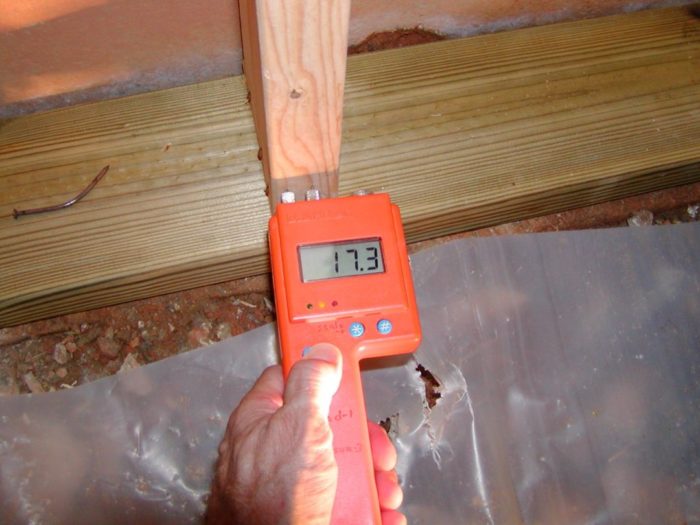
Image Credit: Peter Yost
A moisture meter is a simple, easy-to-use tool for evaluating moisture and mold problems Moisture meters help you figure out whether your building materials are too wet. They typically use electrical conductivity between a couple of metal pins to assess moisture content; the more moisture in the material, the greater the electrical conductivity. The moisture content is measured as a percentage of total weight. The meter pictured at right (www.delmhorst.com) can be used on a variety of building materials — wood, gypsum board, and concrete. For wood, the green light goes on if the moisture content of the wood is below about 15% or so; the yellow light signifies between 15% and 20%; and the red light comes on above about 20%. Wood that has content above 15% inside a home suggests a moisture problem. Marginal decay occurs in wood starting about 20%. Wood reaches fiber saturation somewhere between 25% and 30%, also about the range where wood really starts to rot.(For more information on types of moisture meters and how they work, read “Electric Moisture Meters for Wood”). Moisture meters can come in very handy Builders can use moisture meters to know when to close in framed walls, lay hardwood floors, or install sheet good flooring over concrete. Building scientists can use them to track and identify moisture problems or investigate hidden mold behind closed walls. The picture at right is a good example: What does a moisture content reading of 17.3% in the bottom of this crawl-space stud tell us? Using this equilibrium moisture content (EMC) calculator, it tells us that the stud’s moisture content is higher than it should be in this relatively dry crawl space. The wood is getting wet somehow, but how? Stay tuned; next week I’ll reveal the answer. In the meantime, use the comment box below to guess — the first correct answer get’s an official GreenBuildingAdvisor carpenter’s pencil (actually, it’s a Fine Homebuilding carpenter’s pencil — we don’t have any GreenBuildingAdvisor pencils yet).
Weekly Newsletter
Get building science and energy efficiency advice, plus special offers, in your inbox.





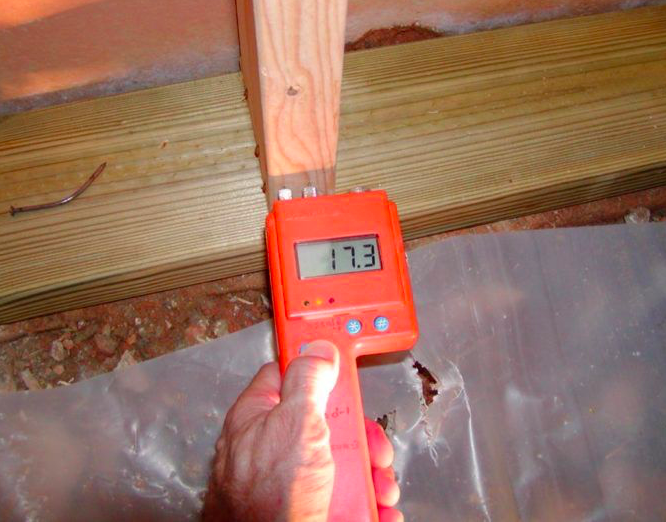
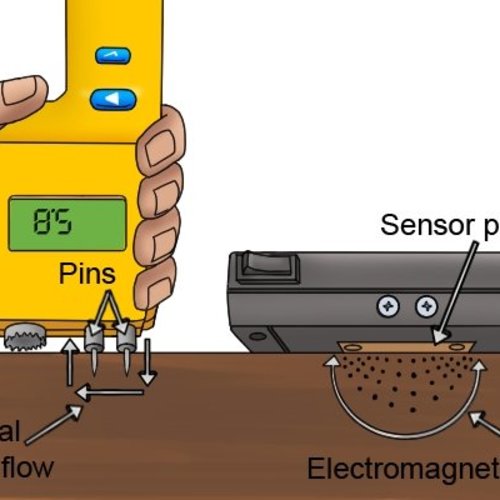
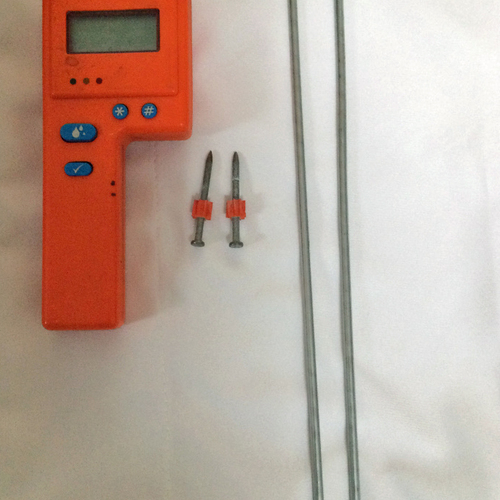
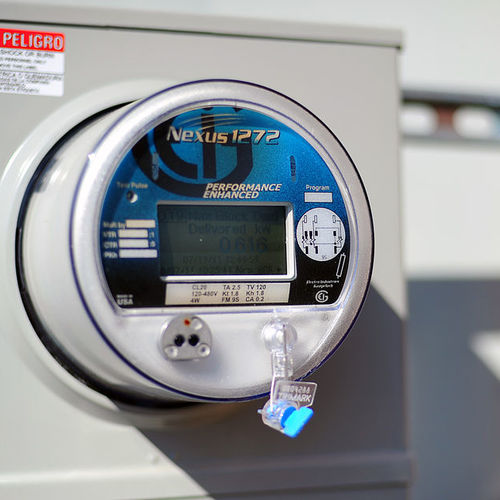






7 Comments
Moisture
The wood is sitting close to the ground with an improper moisture barrier on the ground. And possibly through what looks like a coated block or concrete wall, you can see the mineral build up on the bottom.
Moisture Meters - Residential
Where can I buy a moisture meter in Halifax, NS to determine moisture content in drywall. I've had a leak under upstairs patio door that travelled to downstairs window. The wall ledge below the window is damp. Source of leak has been caulked. I would like to check for moisture/mold in the wall before painting. Thanks!
Purchasing moisture meters
You may be able to find a pin-type moisture meter at a really good hardware store or they may be able to order one for you. Your best bet might be the Internet; for example, here is a supply center for all types of professional equipment, including pin type moisture meters commonly used to evaluate building materials: http://www.professionalequipment.com/pin-type-moisture-meters/.
Be careful
Dear Anonymous,
I think your plan is risky. If you have water damage in your walls due to a leak in a patio door on the floor above, it's hard to imagine that caulk will solve your problem. It is equally unlikely that a moisture meter will be able to probe all of the places where damage may have occurred inside your wall.
If it were my home, I would remove drywall for an inspection. And I'm guessing that a solution to your leakage problem will require more than caulk.
How is the wood getting wet? Moisture source in picture?
Capillary action from the foundation below-
Humidity is a Related, Under-Spoken Factor Too
Peter's comment that this was a dry crawl space suggests to me that the humidty is low here, is that correct? I find that by inserting into the discussion with clients the need for humidity control (and showing relative humdity levels in subject locations) they start to "buy into" humidity control as a part of the compehensive plan.
To the point, Todd appears to be correct on the capillary action. From the photo, it's amazing there's not more moisture or staining.
No staining, amazing
Another piece of information on this house: this home was no more than a year or so old. The occupants had mold on some items stored in the full basement, and that is why we were called to the job. But there simply had not been much time for the capillary movement of water up and through the framing in the crawlspace to express itself.
Log in or create an account to post a comment.
Sign up Log in